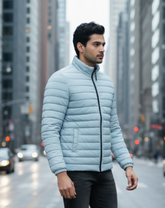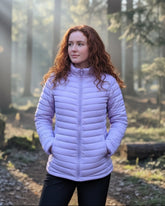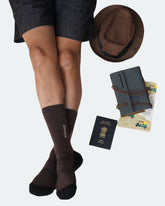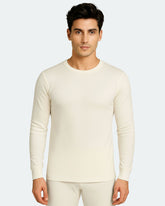Tips and Tricks to Help You Prepare Well for Winter in Canada
Are you planning on visiting Canada this winter? Well, if you want some help with packing tips, this one's for you. Read on and learn some techniques to master Canadian winters.
You must know certain aspects before you're on that flight for a trip during winter in Canada.
Yuktie Jhangiani, Kosha's founder, had the opportunity to interact with Tania Hemdev about winter life in Canada and more. So, this post has excerpts of that interaction.
So, let's get into it right away! This guide shares some information using bits of their conversation. But more importantly, it also talks about general winter survival tips.
Busting Myths About Winter Jackets
Tania: The biggest myth that people have is that the heavier the jacket, the better it protects you from the cold. So how true do you think this is?
Yuktie: That's really a myth. Probably 50 years back, it was something that was true. But, the technology in clothing has advanced so much that you have products which are really Packable Puffer Jacket for Men and still warm."
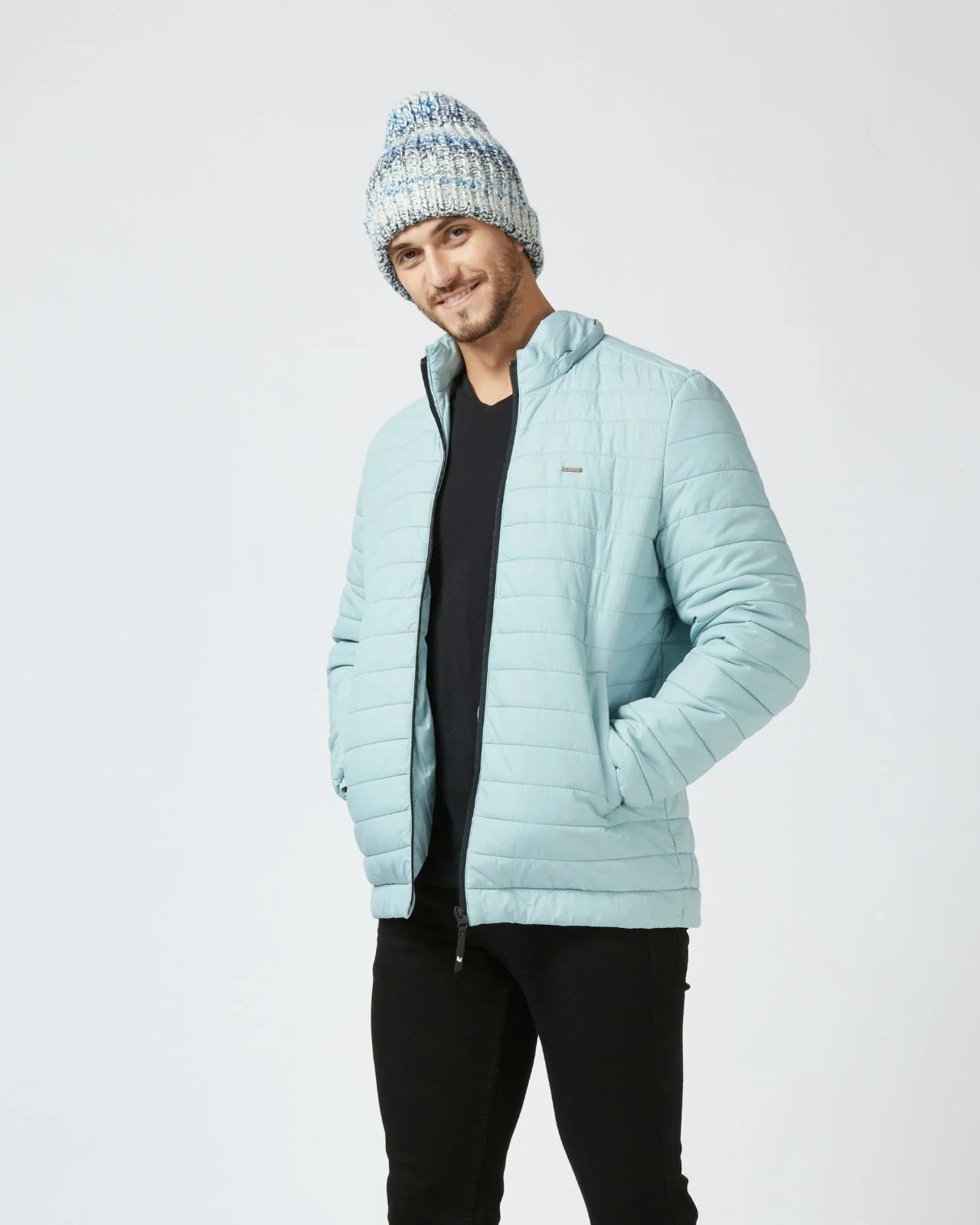
Furthermore, Yuktie also emphasizes the importance of winter layering. This concept is based on a scientific principle. You must know this concept, especially in sub-zero conditions. It will come in handy if you’re travelling during winter in Canada.
The principle goes as follows:
"Every layer you wear blocks your body heat from escaping out." As part of the layers, you start with thermal wear or a base layer. Top that up with a mid-layer. It could be a sweater or a hoodie. Lastly, wear your jacket. It is more to protect you from weather that is snow or rain."
Yuktie also emphasizes the fact that these layers work together as a combination to keep you warm. Tania also adds to this when she says:
Essentials for Surviving Winter in Canada
Tania: "When I came here, I thought all I need to invest in is a good winter jacket, and I'll be good to go. But you also need thermal wear, sweaters, hats, mufflers, Waterproof Gloves for Men, socks, and more."

She also mentions that January and February are the two most brutal months of peak Canadian winters.
During this period, the sun sets at around 4-4:30 p.m., and you get exposure to a bare minimum of sunlight. It's also pretty cold during these months in Canada.
She also mentions how there's a lot to keep in mind regarding winter wear in Canada. And, it's crucial to give importance to your winter clothing. You need to ensure that you survive in the winter weather because it does get really cold.
Tania: "Guys, you do need a good snow shoe! Those shoes are not comfortable, and you'll hate wearing them.
I hate wearing them and try to avoid wearing them. And because of that, I've also fallen in the snow because I've worn basic sports shoes in the snow. So it's not a good idea. Just invest in a good winter shoe because it's really important."
Further, Yuktie shares her experience with footwear while in Traunsee. She shares how a pair of crampons came to their rescue in the snowy conditions of Traunsee. Here's why they can come in handy in such conditions.
When you talk of snowy conditions, the roads tend to become slippery. It could be fresh or melted snow, black ice, or sleet. In such cases, cramp ons attached to your shoes will provide a good grip.
You can use them, especially during your daily commutes in winter. It could help you walk through the many snowy patches on the roads.
It's really important because the snow can sometimes go up to your knee, and the shoes that we wear usually are not designed to survive the cold. So, you really need a good snowshoe."
Black Ice
According to Tania, black ice is the "real beast" for Canadian winters. She also suggested being more careful during the days post a snowfall. It's because that's when the black ice starts to settle in.
Tania: "When the snow starts melting, it forms into water. But somehow, because of the cold temperature, it's not able to melt. And it forms a very thin black layer of ice which is usually not visible. It looks like the road, and you think it's the road.
But, it's uncontrollable the way it slips on you, and you fall."
But she did mention that you could try wearing winter boots in such conditions. They usually come with thick soles. It will break the ice and let you walk comfortably.
The Right Fabrics for Winter Clothing
Yuktie: "As the first layer, it's a great idea to pick up something that's temperature regulating. Because it's you're first layer, it's not something you can peel off."
You'll also see this feature reflect in Kosha's thermal wear for men and women. It's made with a blend of Merino wool and bamboo. This combo brings in the temperature-regulating aspect.
Yuktie: "For your mid-layers, Merino wool is a great fabric. You could also look at options of Fleece Lined Sweatshirt for Women.

Lastly, for your jacket, ensure it's not something that not just looks warm but is graded for a temperature range."
You must also ensure that your jacket is waterproof, windproof, and a good insulator. Here comes the role of a concept called "wind chill."
The First Winter Layer Shouldn't Be Cotton
Tania and Yuktie also emphasize how cotton isn't worth an investment as a base layer. If you wear cotton as a first layer, you should be ready for the consequences.
Yuktie talks about how cotton absorbs sweat and doesn't have good moisture-wicking capabilities. And she suggested against wearing cotton in damp conditions.
Wool, on the other hand, is always reliable in winter. It can do precisely what cotton can't in this case. It's warm and keeps you dry throughout the winter season.
It also has a natural moisture-wicking ability. It lets your sweat evaporate and hence, keeps you dry.
Reliability of Indian Winter Wear
Another myth Tania wants to bust is the fact that Indian winter wear isn't reliable. Yuktie helps her bust this myth.
Yuktie mentions how she has managed to get through the cold weather with 100% Indian winter wear during her trips. She gives a special mention to:
- Frozen River trek in Chadar (Temperature Range was between - 5 to - 40 °.)
- Trip to Norway to see the Northern Lights (Temperature range was between -10 to -15 °C.)
- Glacier Training during a Mountaineering Course (Around 4500 metres above sea level)
She also mentions how she successfully tested Kosha's layers during the mountaineering course.
Yuktie had something to share which could enlighten us all. She mentions how most of the clothes available in Canada are exported from India. They're also appropriate for places like Russia and Scandinavia.
There've also been a few of Kosha's customers who've travelled to Antarctica and returned with good feedback. So all you need to do is invest in clothing from a top-quality and trusted Indian brand.
The Wind Chill Factor
When you talk of windproof jackets, you must also learn about the “Wind Chill” factor. To understand the wind chill factor, you must understand the "current weather and the "feels-like weather."
For example, if the current weather is -10 ºC, the feels-like weather would be -15 ºC or -19 ºC.
It means you will feel as cold as if it's -10ºC with the wind chill included.
Tania also shares how Canadian winters can get really windy. Your hair could be flying, or your hat could be falling out. Hence, wind chill is a crucial aspect to check on any weather app.
And in such situations, you'll need a jacket that blocks all the wind. If you neglect it, you will feel really cold.
Tania's Experience with Winter in Canada
Next up, Tania shares her personal experience of handling Canadian winters post-landing.
Tania: "I came here in September. So I had some time to adjust. And for me, the weather gradually shifted from warm to fall and then winter.
During her first winter experience, Tania got herself acclimatized by:
- Buying a good winter jacket
- Using the correct layers
- Staying indoors.
Regarding the third point, she mentions how most places in Canada are heated. The list includes:
- Transits
- Malls
- Walkways
How Many Layers are Enough?
Yuktie: "Typically, for temperatures between 0 to -10 degrees, 3-5 layers is what would be suitable. The three layers would be your thermals, sweatshirt, or hoodie, and then your jacket.
In the first season, because many of us are travelling from a tropical climate (for example, 30 degrees) directly experiencing sub-zero, one would need more layers. So that's why I said 3-5 layers.
Then, as you get used to the cold, you can reduce the number of layers you wear. Also, it's a great idea to have layers that can be peeled off or multifunctional.
This way, when you step into a heated room and don't need as many layers, you can just take them off."
Yuktie explains the layering aspect further by sharing insights from her personal experience. She talks about one of her trips to Norway. Here's how she handled the cold weather in this lovely location:
- 2 thermals doubled up as t-shirts
- 1 Sweater
- 1 Jacket
So, four layers were enough to survive the cold Norweigan weather. But she goes on to mention that the number of layers should suit your personal resistance to cold. Well, after all, it's you who must feel the comfort along with the warmth.
Tania also agrees with this aspect. She, too, believes that winter layering differs from person to person. Some people have better tolerance levels compared to others. So you must choose what suits you best.
And as you might know, the weather also dictates what the ideal winter layers should be.
Yuktie: "Remember to cover all your extremities because our body loses heat through any parts that are exposed. So keep your hands, ears, and feet covered.
If the temperature ranges between -20 to - 30°C, Yukie suggests that a balaclava would be worth an investment. It gives you the flexibility to cover your face or nose, keeping only the eyes visible.
Conclusion
So I hope you've understood how you can survive the winter in Canada. Remember that winter layering is very crucial in sub-zero temperatures like in Canada.
So, you must pack well when planning to land in Canada during winter. Be alert when you buy your gear, though. They must last for long periods.
So if you're a student flying to Canada for an academic future, take note of these tips. Or if it's a short vacation, hopefully, your winter wear lasts you throughout the holiday. Otherwise, keep a few more options handy in that winter wardrobe.
Whatever you do, I hope you enjoy your time in Canada! If you want to listen to everything Yuktie and Tania discussed, watch this:
View this post on Instagram
A post shared by Kosha® | Winter wear that keeps you warm. (@koshatravelwear)
This post was written by Kosha team member - Shawn Mathias
Editor’s Picks
Packable Puffer Jacket For Men
- From ₹3,900.00
₹8,400.00- From ₹3,900.00
- Unit price
- / per
Men's Full Sleeves Thermal | Merino Wool + Bamboo
- ₹4,940.00
₹7,600.00- ₹4,940.00
- Unit price
- / per
Alaskan Parka Jacket For Women - Slim Fit
- ₹8,925.00
₹11,900.00- ₹8,925.00
- Unit price
- / per
Lightweight Packable Puffer Jacket For Women
- ₹6,300.00
₹8,400.00- ₹6,300.00
- Unit price
- / per
Men's Merino Wool Cushioned Technical Socks
- ₹1,074.00
₹1,790.00- ₹1,074.00
- Unit price
- / per
